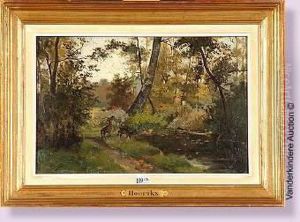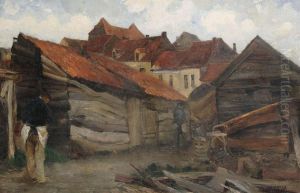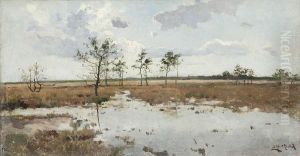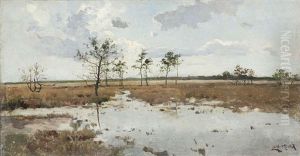Ernest Hoorickx Paintings
Ernest Hoorickx was a Belgian painter, born on January 14, 1888, in Duffel, Belgium, and passed away on August 17, 1972. His work primarily spans the genres of landscape, portrait, and still life painting, embodying the late impressionist and post-impressionist movements that were prevalent during his time. Despite not being as internationally recognized as some of his contemporaries, Hoorickx made significant contributions to the Belgian art scene throughout the first half of the 20th century.
His early years were marked by a traditional education in the arts, studying at the Royal Academy of Fine Arts in Antwerp. There, he was under the tutelage of esteemed artists such as Franz Courtens, who played a pivotal role in shaping his initial artistic direction. Hoorickx's style evolved over the years, initially influenced by the impressionistic approach of capturing the effects of light and color, before gradually moving towards a more expressionist inclination in his later works. This evolution reflects the broader shifts in the art world during his lifetime, as artists sought new ways to express the rapidly changing world around them.
Throughout his career, Ernest Hoorickx participated in numerous exhibitions, both solo and group, predominantly within Belgium. His paintings are characterized by a vibrant palette and dynamic brushwork, often focusing on the Belgian countryside, scenes of daily life, and portraits of his contemporaries. Despite the fact that his work did not achieve the same level of fame as some of his peers, his contributions to Belgian art have been recognized posthumously, with his works being featured in several exhibitions and collections dedicated to showcasing the rich history of Belgian art.
Hoorickx's legacy is one of dedication to the exploration of light and color, and his work offers a compelling glimpse into the evolution of Belgian art during a period of significant change. His paintings remain a testament to his skill and vision, capturing the essence of his time with both sensitivity and strength. Today, Ernest Hoorickx's work can be found in various Belgian museums and private collections, where it continues to be appreciated by art lovers and scholars alike.

![[les Dunes Au Clair De Lune]](https://www.niceartgallery.com/imgs/676270/s/ernest-hoorickx-les-dunes-au-clair-de-lune-970d8d7.jpg)


